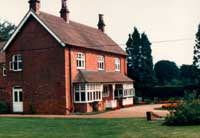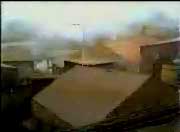
A partnership that was to last for 40 years, formed 'Ashby Smelting, a company that produced Red Lead. This was a scarlet crystalline powder used as the pigment in paint. It was in use in as far-flung countries as India where it was used as face paint. In later years, the toxic properties were realised and it was then confined to use as a protective coating for structural iron and steelwork only.

In 1979, the Billington Division of Shell became joint owners of 'Morris Ashby' and finally in 1982 'Harrisons & Crosfield' purchased Deanshanger Oxide Works from the Wreshner family and Shell and named it 'Deanox'. Their products were as diverse as furniture and toy finishes to automotive finishes and colorant systems. The Red Lead production ceased in December 1991 and the buildings were decontaminated and demolished in December 1995-96.
Later on the 20th October 1997 the Harrisons & Crosfield site was renamed 'Elementis'. Work continued on the site, until 1999 when the decision was taken to close the factory because cheaper imports of Iron Oxide Pigments were more readily available. It has now been demolished in favour of further housing.